?10 Changes From Demon Arms To The PATB Serial
Hey peeps,
I’m hanging out at the hospital. My brother ended up with appendicitis and we’re waiting to see if the antibiotics will be enough, or if he’ll need surgery. So, to avoid having to think of all those worrisome things, I thought I share with you all some of the reasons I went in the direction I did with The Paranormal Academy For Troubled Boys Serial.
Oh, if you missed the preorder for the second episode of PATB Serial, you can snag it here!
Before I get into the changes made in the serial, I picked up a book today that was, like, everything I’ve been missing in my reading lately. In the first chapter alone there was forced-to-fuck, straight to gay, noncon, and unseen alien/demonic entities controlling the action. First chapter. And yeah, there’s plot too. <3 So if you’re interested in a crazy, wild ride of a read—one that’s only $0.99—you should check out the Beast In The Nothing Room.
A lot of amazing books released this week. I’m putting them all here, cuz I’m being wordy today and I don’t want anyone to miss any of the deals.
MM Reads
MF and LGBTQ Reads
10 Things I deliberately changed in PATB (and didn’t)
So, I feel like I should start this off by explaining, a lot of these changes came about because of branding. When I started writing, I wasn’t thinking too much of long term. I was ill, life was happening, and writing was just about whatever felt fun in the moment. But that started to change once I saw my health improving, and I could look at my writing as a business, not just an escape. I had to make some big decisions of how I wanted to brand the Sadie Sins books so that whenever someone picked up one of my books, they would have a fair idea of what to expect about the contents.
If you’ve read episode #1 of the PATB Serial (which hit bestseller in LGBT fantasy last week!!! <3 ) and happened to have read Demon Arms before, you might already have an idea of what direction I’m going for with my branding. But if you haven’t, I’m happy to explain it a bit.
1. More Than Insta Love!
When I was writing the first sequel to Demon Arms, I got to do something I’d never done before. I got to write characters falling in love instead of crashing straight there. I wanted to do that in the Demon Arms story arc too, where it felt like there were reasons Wylie and Dorian end up together, emotional connections and stuff beyond plain old chemistry and a demanding inner dragon. I wanted a space they could grow together, not just magic into love. I write a lot of lust stories—and I love them, don’t get me wrong! XD But I wanted to write a real love story (well, ass real as magic and shifters can get, anyways.)
2. Turning Up The Heat
This was actually one of the choices I struggled with conceptually for a while with this series, partially with how tame I had written Demon Arms. Demon Arms had been confused for YA by a lot of readers, YA with some sex—it just didn’t make much sense, especially when these readers would then see what else I wrote and find a bunch of books that pushed limits they didn’t want pushed. This choice was where the branding direction came in, and I’m sure it is both controversial and loved depending on each reader’s preference.
Here’s the deal, I didn’t want to have to use a new pen name for this series, I didn’t want to build something from scratch, and more importantly, I didn’t want to find myself stuck writing a series I didn’t enjoy writing. So I went in and turned the heat up. For the peeps leaving reviews such as ‘rape and more rape’ yes, that was absolutely by design. Now you know; welcome to a Sadie Sins’s book. For anyone who picks up episode #1 of PATB Serial and enjoys it, they can be happy to discover that my other books contain adult subjects, much of it dark and sexual explicit, and they will not be freaked out by that. For those who can’t handle this first episode, I don’t have to worry about them hating on my other books.
So you’re now all informed. There will be no ‘sweet’ Demon Arms sequels free of kinky sex and aggressive personalities. I’m planning threesomes, sexual slavery, dubcon, scenes of my delicious killer Theo doing what he does best, dark moments, caretakers crossing boundaries with patients, and just all around fun. There’s no point having a power like allure and not using it like a weapon or weakness. This is a world of dark, manipulative magics gained through hunting down and killing shifters; it’s not supposed to be a civilized reflection of reality.
I want a mature audience. I’m not talking like in age (although, to be real, I’ve met more than a few awesome-sauce 80 year old fans.) I’m talking a more mature mentality when it comes to erotic sex, in not thinking fiction is real, in allowing a book to be a book and not demanding it be anything else. I want to have some fucking fun, and I don’t need peeps crying rape about words on a screen. (Go ahead, try to rape words. See how they respond when you shove a dick into text. If pain is felt, it’s not from the damn words.)
This is a tame series, but it’s still a Sadie Sins book. I’m tired of being told erotic sex can’t ever meet amazing plot and strong characterization. I’m tired of people trying to insist that sex ruins the validity and value of a story, and that stories with sex have to be hidden away. I do not subscribe to that kind of discriminatory thinking about my fiction, and I want to draw in readers who don’t either.
3. Show, Not Tell
I started this when I wrote Hellcat, this hint of craft that’s been growing after I spent a few years writing. I has started looking at scripts, started studying movies and tv series and musing on how I could improve the things my writing was lacking. I needed to create a more concrete world. My characters were all in their heads, narrating the events instead of IN the events. I wanted to show the world, but more importantly, show how the characters impacted their environment. What did a gesture do to the scene—a burst of magic, a flare of anger, anxiety? If it were a movie, how would it look, and how would the physical world change in response to the character’s action? I felt the best way to get the characters out of their heads was to put them in the scene.
Now, when Wylie’s hands are shaking because he’s nervous, he tears through a shelf and a bundle of cash so we can SEE he’s nervous. We don’t narrate that men are hollering at Theodore for base, sexual favors but have them shout thinks like “suck my dick, sexy!” In my first draft of Hellcat, I had tried to explain that Sean was a shitty friend to TJ, only to realize it would be way easier to show it by having him jerk off while talking to him on the phone. It that doesn’t say total shit friend, what does, right?
There are some consequences to showing instead of telling. My very first draft of Demon Arms was in first person, and it had a strong narrative voice as a result that shined through even when I changed it to third person for the final draft of the book. Showing a scene instead of letting Wylie tell it stripped a lot of the personality away from his inner voice. I tried to preserve it a bit, ensure that his thoughts or words were heard, but it absolutely changed things. Wylie’s not just telling a story now but is in one, reacting to what’s happening, and at the same time, the environment reacting to him.
I still struggle with it. It’s a new skill I’m learning, not quite a natural habit, but it makes me see my writing in a brand new way, I love that. I love the challenge. I can’t imagine ever settling for the same old thing as a creative. Without the promise of something new to learn, it just gets boring after a while.
4. Beast Voices
This was a last minute decision, but it made this story in a lot of ways. I was doing the final draft and I kept forgetting the motivation of a very important character Wylie was dealing with: his dragon. There’s this voice inside of him that’s been quiet for so long, so quiet that he confused it with his own for the last 10 years. Yet here he is, mid heist, letting his demon arms out for the longest time ever, and he’s starting to realize he’s not that alone in his head. That the shit he thought was annoying about his arms is actually quite deliberate because the beast inside him is a different being who wants different things—for starters, blood.
Wylie was not an ‘out-of-control’ paranormal like the other patients in Demon Arms, he was just a wannabe thug with a bad past that he used to excuse his shitty behavior. But as our intro into the series, I wanted to show what out of control really meant—how a shifter could lose control because they’re battling with a completely different personality inside them. I think Theodore becomes a beautiful example for this. We don’t really know why he’s working for the Academy in this intro, why he is so interested in ensuring the patients are safe, but we know in this first book that he is damn well familiar with what it’s like to be out of control when it comes to his dragon. For the most part, they seem in sync, doing what needs to be done, the goals the same… until the dragon asserts a demand of the moment, and you can see the cascade of compromises Theodore must make to get along with the beast.
Would these compromises be required when things are much calmer, when stress isn’t crashing down around Theodore? Probably not. We get to see the beasts as a stress response, where the more difficult something presses on Theodore psychologically, the more his beast rebels and wants to do things his way. It’s why Wylie’s dragon showed up in that gang initiation—stress. Stress kills, even. XD We don’t see Theodore go out of control, but we do see what happens when his beast is in control, tearing through skinners and full of a rage that comes from being hunted for a lifetime and seeing so many die.
I found that in Demon Arms, the conflict was rather nonexistent or easily diffused when it came to the patients. It wasn’t realistic, and I realized I needed those beast voices—those impulsive, animalistic reactions—to keep tensions up in the more peaceful parts of the story. Otherwise, it’s boring.
5. A Grown Up Perspective
I really wanted some adults to get a pov this time around. Theodore and Michael get love story arcs later in the series that I wanted to easily transition into by giving them stronger parts now. I wanted to head hop, I’ll be real. XD I like head hopping, and apparently I did it well this time cuz no complaints were made (that I saw.) I want readers to meet the characters and care, and I could only do that if they got to really see and feel what it was like to be in their shoes.
But also, Theo and Michael are the first wave of Academy goers—the ones still alive—and they’ve seen up close the world and danger that they’re protecting their paranormal patients from. They’re a bridge in a lot of ways, providing a more worldly view. They don’t get to hide from the world but are forced to navigate it as a form of protection. They understand when direct action is needed and how sometimes good and bad are completely blurred when fighting to live. That those lines are naturally blurred when it comes to killing, and trying to pretend they aren’t is idealistic nonsense that neither of them subscribe to.
Killing to survive is not a heroic act. Murder at all is not some white shining knight BS. Death should not be prettied up or sanitized—to kill a person, there is blood, pain, a line crossed every time. This is not a simple ‘bad guys are evil and therefore they deserve to die’ type of series. That’s 2-Dimensional and unrealistic. Everyone who dies is a character, and I want my characters to be fleshed out, felt, possibly even mourned.
I am not here to write a manual of how to be a good person—the teens in this book; that goal might be important to a lot of them. It’s usually a theme for younger people as they strive to find a place in the world. But Michael and Theodore have experienced a level of life—of war and slaughter and systematic bigotry—that makes them not care about morality the same way. They care about survival; they care about a life well lived; they care about doing what needs to be done with ruthless precision, sometimes preemptively, so that they can wake up and face themselves in the mirror each day because their patients weren’t slaughtered. For every confused question from the teens of if it’s right to do bad to survive, our caretaker adults already have an answer and it’s ‘it doesn’t matter. Just survive.’
6. Not Always Agreeing With The Characters
This was a risk, but at the same time I find the stories I love the most are of complex characters we don’t necessarily like all the time. I don’t think good characters are necessarily supposed to be people that would be your best friend. I think it’s a bit like the funny prankster in a story; that guy is usually a sarcastic, total asshole. People ignore it because they laugh, but the reality is you don’t want to live with Homer Simpson, or Peter Griffin, or with those douche-bags from the big bang nerd show. People in sitcoms are fucking terrible, and I don’t think their behavior should really be a reflection of how people should treat each other. But that doesn’t mean they’re not entertaining.
So, this is not a sitcom. These are people trying to do the right thing, but in situations where right is a compromise to the dark stuff happening around them. It’s the compromise of ‘a little bit better than worst.’ First time around, everyone was best friends in the Academy, except for Leo. Leo is won over pretty easily, and you see this a lot in stories, especially romance troops. It’s like this equalizing of conflict and personalities to get along, just because the characters are all in the same scenes. They lose their independence, they lose their motivation, and they become tools for the author who is failing to notice that these characters are no longer there own personalities.
In that regard, I’m trying to be better this time around (but it is tough.) I’m not saying on making them enemies for the sake of conflict – although there is absolutely nothing wrong with that. It’s more, trying to allow the characters to be true to themselves while not being caught up by my own personal need to make them agreeable to get the plot going. Sometimes characters kick and scream, fighting against the plot, and those are usually the best stories. These big personalities, these alphas, sorcerers, just inner beasts combined with hormonal teens and 20 somethings should not result in everyone getting along. That shouldn’t be automatic; that should be what a lot of the work in the character development is for, teaching them to get along.
7. Villains
I realized we needed villains. Wylie’s gangsters weren’t going to be enough. How could I show that this was a world full of shifter hunters, that shifters were actually in danger, and let it be felt, not just heard in passing? Well, now the police station isn’t full of indifferent professionals who were just trying their best, but some are clearly bigoted against paranormals like Wylie, hating him just because they know at some point he can turn into something they can’t. We can see the bigotry is deep, where even the paramedics, a company created to help people, would put the well-being of others and their own profit aside to ensure their unreasonable hatred makes their decisions.
This is why villains, shifter hunters and skinners, were needed from the very beginning. We need to see what it means to hunt a shifter, what that power looks like that they’re trying to obtain, the type of money that went into it—that armored bus wasn’t cheap—and we got to see that in things like the chameleon coat, and some of the abilities the skinners use against Theodore as they battle. We get to see the hatred, the question of what is really human in the sorcerer who takes over George Snyder’s appearance. Here’s a sorcerer passing as everyone else around him, but his hatred runs far deeper than any strangeness that would be in a shifter hiding in human flesh.
These themes were already there in the first book, but they were just themes, they weren’t really realized in the environment. I think this time around you get to feel the weight of these concepts, see how the world is shaped by them. I’m actually rather excited about it, to be honest. Characters grow the best when in conflict, and stories get more interesting as a result.
8. Increased Word Count and Detail
Okay, this was not particularly planned. Actually, I fought this a lot until I realized just WHY my writing style had changed so drastically. When I realized what was happening, I gave into it. I don’t subscribe to a ‘right’ kind of writing. I think we all have different styles and that’s perfectly fine. But I do know as a content creator, some level of consistency in style is helpful, if not expected, and that was my concern in all this.
Here’s the reality: my brain changed. I had no say in the matter. It started happening once I got my allergies under control. I think the first signs of it were when I was writing Hellcat in the beginning of 2018. That book—believe it or not—was supposed to be a short story. Instead it became a novel over 100,000 words long. I noticed something was happening in my head, how I looked at words, how I started to *see* a scene and not just float around in the dark. Shortly after publishing Hellcat, I was hit with mold that took over my bedroom and living room, and the neurotoxins had me suffering with multiple chemical sensitivity for months. During this really shitty time, my brain got messed up. It’s hard to be an observer to your mind when your brain is the one struggling, but my functionality in my life was impaired. Eventually, after taking a ton of supplements to regrow neurons, support and protect my brain, supplement my flat lined dopamine, remove the neurotoxins, heal the damage, lower the inflammation and stop the immune response, I returned to ‘normal.’ Except normal had changed.
You can see the change when during episode 11 of Demon Bonded in July, 2018. What averaged as 15,000 word episodes became 35,000 just for a handful of scenes, and I was completely unable to stop it. My brain had decided on a new level of ‘done,’ and it wasn’t where the old line used to be.
Have you ever looked at the way someone cleans a kitchen counter top—or a room, or maybe it’s their car, etc—and it’s different from the way you clean? We all have different levels of done. Some people need to wash that counter down, make sure every crumb and speck it swept away, clearing off the surface completely just to neatly arrange things back once it’s all clean: that’s their done. Someone else, they pick up the obviously dirty dishes piled there, toss them in the sink for washing later, and flick a few crumbs away: that’s their done. Another person might glance at the mess on the counter top and decide to go watch tv: that’s their done. We’re all different, yet we still have a line that’s called done. My done line moved, and it feels in a drastic way, much more toward the cleaning every fucking aspect of the counter to then neatly arrange the stuff back on the top. And no, this style is not always relatable to people who wait a week or month to get to cleaning their counter top.
When I started this rewrite, I noticed that a scene suddenly took 3 times the amount of words to write on average. It required more words to describe a scene, to linger and show an action instead of have the character think something unattached to the physical world of the scene. The style was more immersive, more in-depth, more action oriented. And to be real, when I saw this drastic change, I worried. A lot. I had attracted a fan base with my previous style. 100%. And I know the writing game—popular fiction is rarely about wordage or sophisticated vocabulary. And erotica? Yeah, no. Just no. This could absolutely destroy me as a writer if my fanbase hated it. But… my brain couldn’t write any other way.
I had no choice in this. Seriously, it’s not like I’m looking to pad word count, or scam people by making a book so long it needs to be broken into pieces, or anything like that. It broke me for a while— I could see the severe problems with such a big writing style change after years of having put out a different style. It could be career breaking, or at least fan breaking—I don’t even like to read long books, but here I am, everything I write becoming long as fuck! My brain changed and there was nothing I could do about it.
So… I chose to embrace it instead of trying to slice up this new style. I had spent far too long battling with myself, battling my insecurities, and making compromises where I was never allowed to just exist as I am. I accepted there was no going back and forged forward instead. The new style came naturally, meaning I would write faster this way, in flow, as long as I didn’t battle myself. If I set the style in the first book, those who liked it would know the entire series had the same style instead of getting a bad surprise next book. And it is a style thing—style doesn’t mean anything beyond a preference of getting words on a page. I can’t decide what readers like; I can only write to the best of my ability and put my work out there.
I am absolutely certain that I have alienated previous readers with this style, and there is very little I can do about it but keep writing. I’m sorry if you were used to how I wrote before; I really am. I can just hope my brain has settled and sticks with one style—whatever it might be—so fans won’t have to go through such a drastic change again.
9. Serial Instead of Novels
This story was too complex in plot and far too much planned in the future to be able to squish it all into a novel format. Demon Arms was planned as a love story a book, and it just wasn’t going to work. I started Fox and Vincent’s story arc in the sequel and they just couldn’t fit some romance mold. So instead of cutting the story down to fit a norm, I decided to go wild and plan this as a long serial. Each episode plans to be around 80,000 words, give or take.
10. Demon Arms Was Unscathed
I think the greatest reason I was able to break out of the old style was by not touching Demon Arms. This wasn’t a rewrite that was ‘fixing’ the original. I didn’t want to replace it, didn’t want to take it away from the fans. This was probably the final deciding factor in why I pushed to create it as a serial instead of novels; I needed to change the format completely to push away from it getting caught up in the old book.
I was a younger author when I wrote Demon Arms, still swayed by popular demands, still trying to figure out what my style was, what my brand was. I had to think hard about if I wanted to be isolated on Amazon and the romance genre for being dark—dark romance was so damn small, and it was hard to know if it would be allowed to grow when everyone was screaming about requiring HEAs for a book to be a ‘real’ romance, etc. I didn’t want to erase the first book even though I had grown up. When I set out to write the PATB Serial, I knew who I was, and I knew who Sadie Sins was, and I didn’t need to erase that journey.
Sadie Sins does not write young adult. Her endings are happy but there are always compromises, always dark paths to get there, and morality is not the main key. Cleverness, perseverance, character connections; that’s how happy endings are reached. Love in the darkest of moments fuel these characters to never give up, to be their best versions, even if they’re still imperfect and held back by their unique limits. It’s easy to love a diamond for its shine, but far more valuable to love it for its flaws.

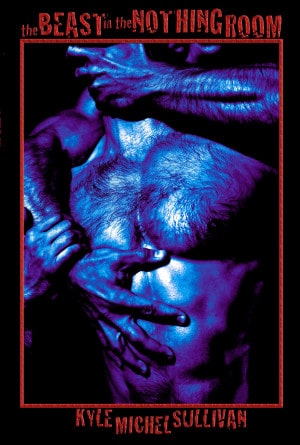
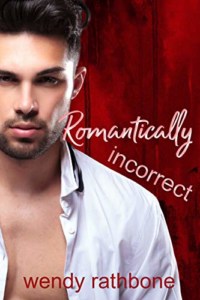
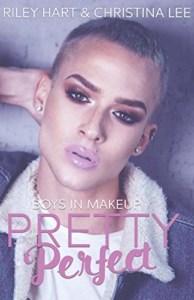
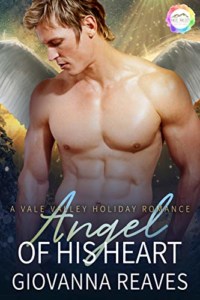
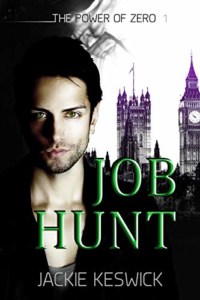
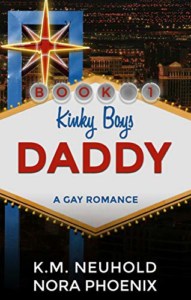
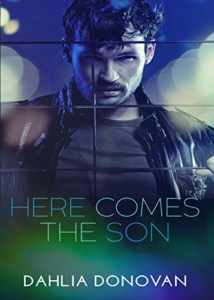
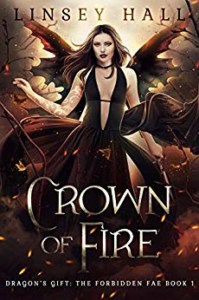
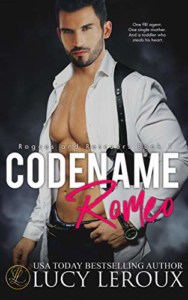
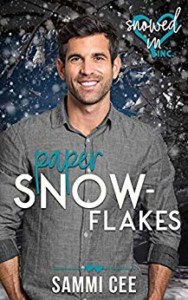
Hey Sweetie,
I truly enjoyed your previous books. Every one of them! (Yeah I’m a kinky fuck)
However, the new version of PATB is incredible, intense and FANTASTIC!! It’s apparent that your writing style is changing and maturing! I LOVE IT!!
You keep doing YOU! Your real fans will grab hold and enjoy the ride.
Huge Monster Hugs
Keeping you and your Brother in my thoughts.
*monster hugs* Thank you, Blaine!
My brother is definitely doing a lot better. They’re considering starting him back on solid foods tonight, so it seems the antibiotics are working and he won’t need surgery. *fingers crossed just in case*
The style change is tough, but I think it came at the right time, if that makes sense. I hadn’t published in over a year, kinda dropped off the face of the planet when my motivational system connected to the dopamine got messed up. So I figure in some ways, it’s a bit like starting fresh. I would rather build a brand around the crazy things I like to write, then build one around stories that bore me. It can be tougher to get noticed because I’m not following the same trends, but if I do it like a counter culture to the current trends, there’s potential there too.
And… I think my writing has improved, yeah? I know there are some who don’t like it, but for the most part, people seem to be really pulled into the story and enjoying it, so I just gotta focus on that and not my insecurities. (lol, easier said than done.) Thanks for the amazing pep talk, darling. ^.^